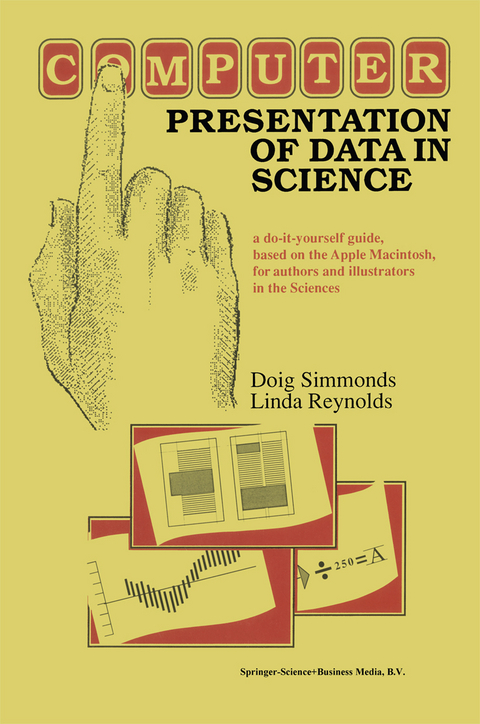
Computer Presentation of Data in Science
Kluwer Academic Publishers (Verlag)
978-0-89838-415-4 (ISBN)
Books about printing written for printers or would-be printers go back over 300 years. The earliest of them were almost exclusively concerned with books; this century, however, there has been more emphasis on other kinds of documents, and particularly their design. But no shift in document production has been more sudden than the one that has happened most recently. ConSequently, the last five years have witnessed a substantial movement away from books written for professionals to ones whose aim is to help would-be authors produce their own documents. The opportunities for authors to do this have been opened up by the advent of desktop publishing (a term coined as recently as 1984). As most exponents of desktop publishing have come to realise, the term is something of a misnomer because the provision of facilities that allow authors to produce their own material for publishing is not quite the same thing as publish ing. Nevertheless, it has been useful in focussing attention on author-produced documents, and what might be described as the democratisation of document production. This book is different from others in the field. Its target audience is the busy scientist engaged in teaching or research who uses computers in the ordinary course of work. The world of scientific publishing is rapidly moving towards the day when journals will expect contributions from authors on disc, or even by direct transfer of data from the author's computer to the output device of an editor via telephone and satellite.
1 Introduction.- 2 Choosing your system and software.- 3 Working methods.- 4 Preparing manuscripts and camera-ready copy.- 5 Principles of typography and layout.- 6 Using type and space to show the structure of text.- 7 Artwork creation and drawing tips.- 8 Posters, slides and OHP transparencies.- 9 Designing with colour.- Glossary 1 Terms used in graphic design and printing.- Glossary 2 Terms used in computing.- Appendix 1: Copyfitting.- How many words are there in the text?.- Method 1: Calculation by character count.- Method 2: Calculation by word count.- How many lines will the text occupy when it is typeset?.- How many lines will fit into a given column height?.- Appendix 2: Signatures and imposition.- Appendix 3: Publishing and the law.- Copyright.- Legal deposit in the British Library.- Deposit law.- What is ‘publication’?.- Exempt publications.- Copyright registration.- International Standard Book Numbers.- Data Protection Act.- Appendix 4: Working comfort.- The work surface.- Seating.- Positive versus negative screens.- Screen filters.- Lighting.- Spectacles.- Further reading.- British Standards.- Writing.- Style manuals.- Electronic manuscripts.- Desktop publishing.- Legibility.- Typography and layout.- Tables.- Graphs, charts and diagrams.- Overhead projection.- Copyright.
| Erscheint lt. Verlag | 31.12.1988 |
|---|---|
| Zusatzinfo | XIV, 178 p. |
| Verlagsort | Dordrecht |
| Sprache | englisch |
| Maße | 155 x 235 mm |
| Themenwelt | Mathematik / Informatik ► Informatik |
| Medizin / Pharmazie | |
| Naturwissenschaften ► Biologie | |
| Naturwissenschaften ► Geowissenschaften ► Geologie | |
| Sozialwissenschaften ► Politik / Verwaltung ► Staat / Verwaltung | |
| ISBN-10 | 0-89838-415-X / 089838415X |
| ISBN-13 | 978-0-89838-415-4 / 9780898384154 |
| Zustand | Neuware |
| Haben Sie eine Frage zum Produkt? |
aus dem Bereich


